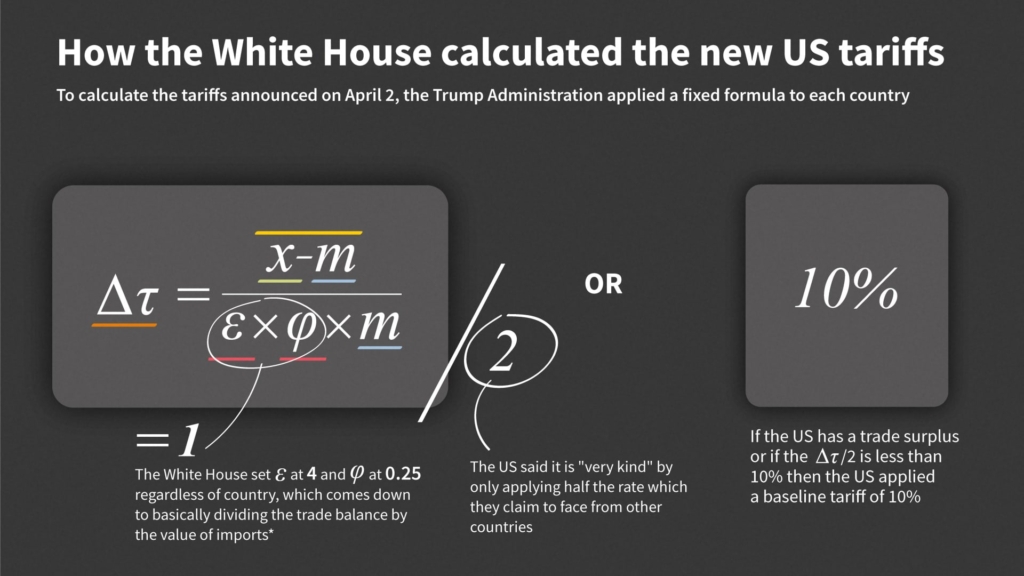The recent tariff announcement by President Donald Trump has sparked significant concern among economists, who contend that the underlying formula lacks sound reasoning and is rooted in misconceptions.
Analysts highlight that Trump’s approach is built upon a serious underestimate of a crucial economic variable, leading to exaggerated tariff rates for various nations.
The Office of the United States Trade Representative indicates that Trump’s “reciprocal” tariff scheme is calculated by taking the trade deficit the U.S. has with each country, dividing it by that country’s exports, and then halving the result. In addition, the administration has set a baseline tariff rate of 10% applicable to most countries.
However, experts Kevin Corinth and Stan Veuger from the American Enterprise Institute argue that the elasticity rate utilized in Trump’s formula is significantly lower than it should be. They assert the formula assumes an elasticity of import prices in relation to tariffs at approximately 0.25, whereas it should be closer to 1.0 (specifically 0.945).
The economists assert, “Their mistake is that they base the elasticity on the response of retail prices to tariffs, as opposed to import prices as they should have done.”
The imposed tariffs, which range between 10% and 50% across various nations, could see significant recalibration if the assumptions regarding elasticity were amended. In fact, no country’s tariff would surpass 14%, with many remaining at the baseline rate of 10% set by Trump’s administration.
For example, under the current tariff plan, Lesotho faces the highest rate at 50%. Using the adjusted formula, however, this rate could decrease substantially to 13.2%.
A report released this week by the Cato Institute also identified discrepancies in the tariff calculations employed by the Trump administration. The analysis revealed that the trade-weighted average tariff rates cited by Trump to rationalize his reciprocal tariffs are inflated compared to actual measures.
To illustrate, the Cato Institute noted that the 2023 trade-weighted average tariff rate from China was reported at only 3%, yet the Trump administration claimed it stood at 67%.


























